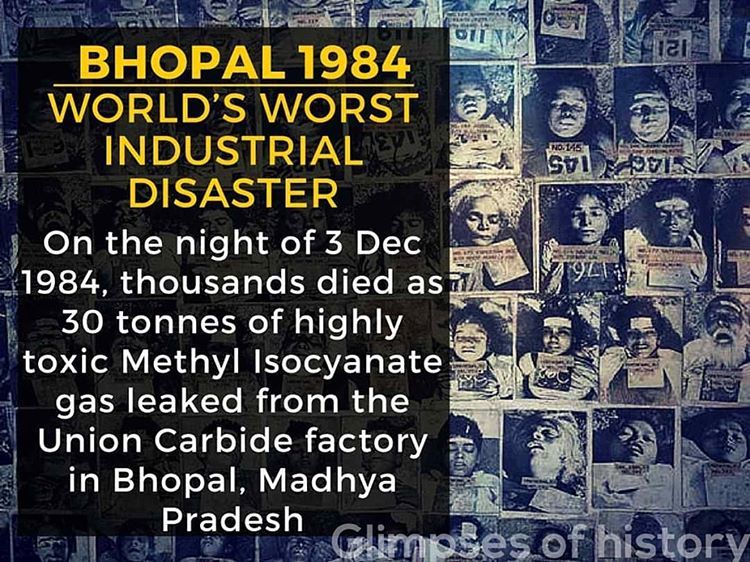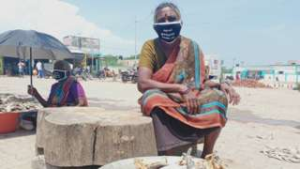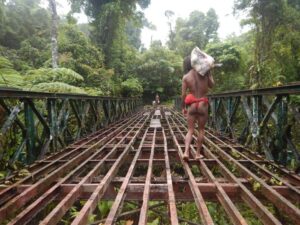Sabrangindia
Do you know what happened in 1984? A Google search may help, but will it really? The first page of the results will show you only the most talked about incident – the assassination of Indira Gandhi and the anti-Sikh riots that followed. What it doesn’t show you are the photos of more than 10,000 people who died and more than 5 lakh afflicted in Bhopal in the country’s worst industrial disaster.
35 years on Bhopal seems to have been struck with two tragedies—the one that happened immediately and the other that unfolded in the years that followed.
What Happened Then
On the night of December 2, 1984, millions in Bhopal took their last breath when the chemical methyl isocyanate (MIC) spilled out from Union Carbide India Ltd’s (UCIL’s) pesticide factory turning the city into a gas chamber. Vomiting and dying, people ran out on the streets. As the cloud of gas hit the town, people woke from their sleep choking, gasping, and vomiting. Many were immediately affected, their skin burning and lungs failing.The US-based multinational company, Union Carbide Corporation (UCC) which owned the plant through its subsidiary UCIL, did nothing to help alleviate the human tragedy.
35 years later, the people who survived the tragedy and their innocent children are still fighting for justice. And what has been the State’s response to their misery? Nothing but callous.
Even today, the victims and survivors are battling extreme insensitivity and being shortchanged by incoming and outgoing governments. Not only has the ghastly incident taken a toll on their lives as well as their next of kin’s, the survivors till today are paying the price of what happened that night.
The Victims End Up Paying the Damages
Physical Trauma
Because Union Carbide used trade secrecy to withhold information with regards to the exact composition of the leaked gases, nobody knew about the toxin that leaked out of the factory on the ill-fated night of December 2, 1984. Nobody knew about the antidote either. While over 300 toxic chemicals are said to have been released during the leak, research has been carried out only to check the toxicity of pure MIC.
While a few weeks later, while some claimed that the worst was over, till date nobody knows the impacts of MIC or how to treat patients exposed to it. Furthermore, it is not just the victims present at the site who suffered. It is all those children born after the incident who bore exposure to the deadly gas in their mother’s wombs and people living there today exposed to the chemical wastes dumped in and around the UCIL factory that have contaminated drinking water.
Treatment of patients has only been symptomatic. Even though evidence of people suffering from cyanide poisoning came to the fore and the injections of sodium thiosulphate seemed to have been working, they were stopped, apparently under pressure from UCC and its lawyers.
Uninspired research from the government did not yield much. Independent studies pointed out to serious crises from birth defects to cancer to mental problems.
Over the past five years, the Canadian researcher Shree Mulay and volunteers working with Sambhavana, a nonprofit clinic set up by activists, have been collecting data on mortality, birth defects, fertility, cancer and many other aspects of people’s health. With about 5,000 families in each group, the study includes 100,000 people in all. Mulay’s team is still analyzing the data, but preliminary results indicate that people exposed to the gas or the water or both have a higher incidence of cancer, tuberculosis and paralysis than those exposed to neither. They also suggest that gas-exposed people have 10 times the rate of cancer, particularly liver, lung, abdominal, throat and oral cancers, compared to the other groups.
Mental Trauma
The Bhopal Gas Tragedy was the first disaster in India to be studied systematically for mental health effects by the Indian Council of Medical Research (ICMR). Even though the vastness of the disastrous emotional and mental trauma was established within a fortnight of the incident, the involvement of psychiatrists / neurologists did not begin until 8 weeks after the incident as none of the five medical colleges in MP had a psychiatrist on the staff.
The dead may have not been so unlucky after all. Their end, though horrible, had been brief. The survivors though, will never get relief so quickly. Amid convulsions, screams, fainting spells and fear of the dark—men, women and children are left to their resources to fight the ghosts of those memories that keep coming back to haunt them.
Environmental Impact
A 1982 safety audit by US engineers had noted the filthy, neglected condition of the plant, identified 61 hazards, 30 critical, of which 11 were in the dangerous MIC/phosgene units. The audit warned of the danger of a major toxic release.
It’s not just MCI that UCIL was manufacturing. The factory used to manufacture three pesticides: carbaryl (trade name Sevin), aldicarb (trade name Temik) and a formulation of carbaryl and gamma hexachlorocyclohexane (g-HCH) sold under the trade name Sevidol. Till 15 years after the disaster, the factory dumped by-products, process wastes, solvents and polluted water at dump sites outside the plant. In addition to that, there is another 350 tonnes of waste kept at a leaking shed at the site.
In August 2009, samples of water from handpumps in the area were analysed by a Greenpeace laboratory in the UK. Carbon tetrachloride was found at 4,880 times the Environmental Protection Agency (EPA) limit.
All of these chemicals take hundreds of years to degrade and even the decontamination and cleaning of the dump site has run into legal wrangles over who should pay for its clearing—the State, Centre, incineration companies or non-profits.
The toxic waste and poisoned water have now become a legacy for the people of Bhopal.
The Culprits that Got Away
Union Carbide, the American chemical company that became infamous for the world’s worst industrial disaster, is now a wholly owned subsidiary of Dow Chemical Company. Warren Anderson, the then CEO of Union Carbide who was declared an absconder and a fugitive lived in anonymity and seclusion in Long Island, New York before his death on September 29, 2014.
Both Dow Chemicals and UCC washed their hands off the disaster. UCC said that it was not subject to jurisdiction of the Indian court as it wasn’t involved in the operation of the plant for it was operated by the Indian arm of the company.
Anderson kept a stoic silence on the issue for more than two decades, avoided social contact and hid from media and activists who have fought tooth and nail to bring him to justice. Warren Anderson did not appear for any of the judicial proceedings conducted by either the District Court, Bhopal or the Supreme Court of India.
The Indian government has never been very serious about pursuing the case againt Dow Chemicals and UCC. Documents available in the public domain, including on the internet, show how maintaining future FDI and Indo-US relations took precedence over holding culprits accountable for their actions.
Promises – Just Promises
With physical relief came the need of economic rehabilitation and today, three decades after the incident, the government has to still secure Rs 61.72 crore for 3,629 cases which are pending approval. The Centre has still not acted on their request.
In the meantime, the number of eligible survivors who should be compensated has increased—many of whom have moved the appellate court in Bhopal to hear their appeals. More than 200 new cases of permanent and partial disability have been granted approval for compensation but are still awaiting their payments.
Nearly 50,000 survivors have been compensated since the tragedy in 1984, but around 48,000 claimants are yet to receive their payments—more than three decades after the tragedy occurred.
In 2018, an RTI revealed that The Bhopal Gas Tragedy Relief and Rehabilitation Minister Vishwas Sarang misused 60 per cent of the funds allocated by the Government of India for the economical rehabilitation and construction of 2,500 homes of the gas victims living in the vicinity of the Union Carbide Factory.
Out of Rs 272.75 crore allocated by the Ministry of Chemicals and Fertilizers in 2010, only Rs 129.50 crore was used by the government till 2018. Rs 85.87 crore was diverted from the remaining Rs 143. 25 crore to fund different government schemes.
At the time of the incident, UCC settled in 1989 for $470 million in damages, with each patient getting Rs 25,000 (roughly $2,200 at the time). The International Campaign for Justice in Bhopal (ICJB) has since been fighting for a higher compensation and to get the site cleaned up, but to no avail. This, even when Dow merged with DuPont in 2017 on a contract of $130 billion.
In June, at a review meeting the Centre thought of utilizing the corpus fund of around Rs 891 crores of the Bhopal Memorial Hospital Trust (BMHT). There were also talks of the BMHT being merged with the All India Institute of Medical Sciences (AIIMS), but that too is pending necessary approvals. Till then, all the payments to claimants have been frozen.
The government, which alleviated some public outcry by paying an additional sum of tax-payers’ money to victims and their families in 2010, has now filed what’s known in India as a “curative petition” to the Supreme Court, urging it to reconsider its ruling and compel Union Carbide to pay more. The SC earlier dismissed the curative petition by the government calling for Dow to pay $1.2 billion. Activists and survivors are fighting for a figure of close to $8 billion keeping in mind the widespread health impacts on thousands in the city.
Activist Rachna Dhingra of ICJB recalled the fine of $21 billion paid by Union Carbide over the Deepwater Horizon oil spill. She said that the issue of race played a very important role in this matter. The victims of the Bhopal Gas Tragedy were considered lesser human beings.
Will Bhopal Ever Get Justice?
For pushing political agendas, for treating humans like pawns in a game, for usurping everything what the afflicted deserved and yet leaving them to suffer—will the people of Bhopal ever get justice? Only time will tell.




